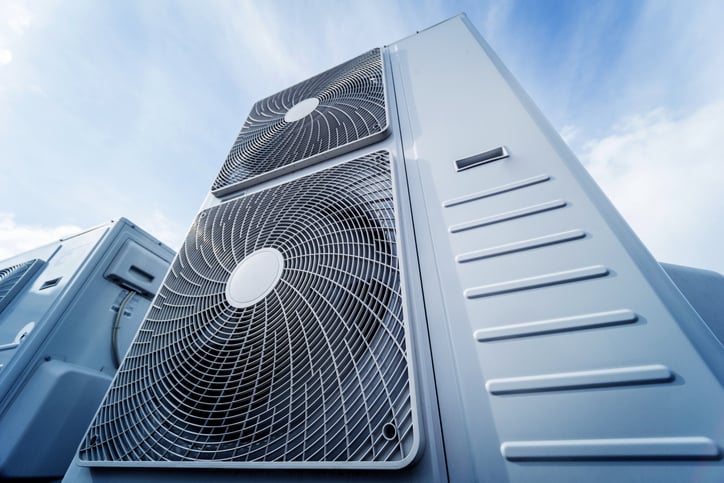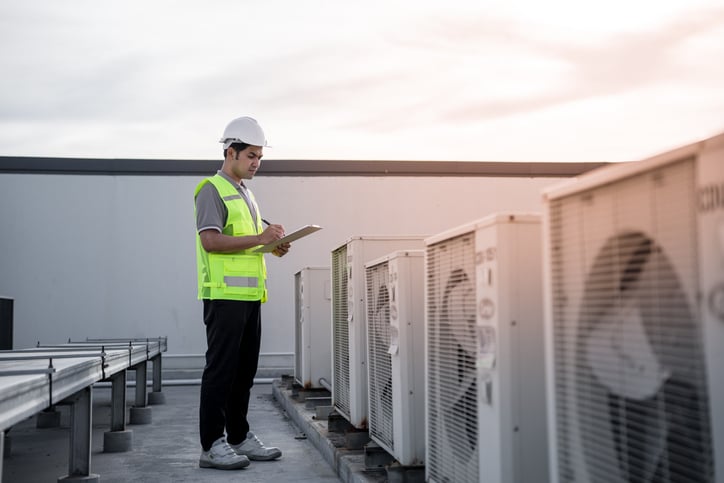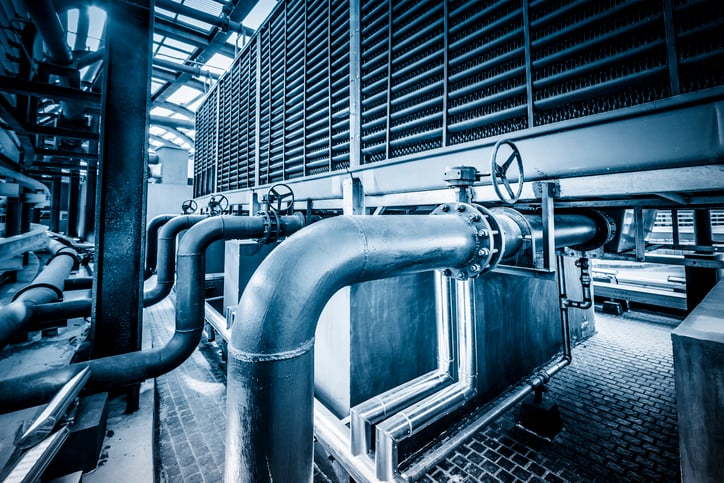Advanced HVAC Temperature Sensors & System Design for Optimal Climate Control

For most people, an HVAC system has one primary function: keeping indoor climates at a comfortable temperature.
It doesn't matter if the system is doing other important work in climate control – say, keeping humidity at the right level or monitoring for pollutants. If the temperature inside a space is too hot or too cold, people notice and aren’t bashful about saying so.
Temperature control is one of the oldest automated processes for HVAC systems. Whether it’s in a residential or commercial space, the last thing people want to worry about is having to manually control the systems that keep temperatures in check. What’s more, with the push for energy efficiency, automation and real-time response to ambient conditions have become that much more important in HVAC.
What keeps HVAC performance where it needs to be (unnoticeable)?
Advanced temperature sensor technology strategically integrated throughout the system.
4 HVAC Temperature Sensors for Your System Design + Chart
Put simply, an HVAC system is only as good as its components.
In monitoring and managing the most notable metric of HVAC system function, there are several sensor types for temperature. Let’s take a quick look at four ambient temperature sensors for HVAC and their applications:
- Thermistors, the most common temperature sensors in HVAC systems, are known for their precision and rapid response. These sensors change resistance with temperature fluctuations, offering high sensitivity. Ideal for general climate control, they are the backbone of many HVAC systems, ensuring consistent indoor temperatures.
- Non-Contact Infrared Sensors (NCIR) measure temperature without direct contact. Using infrared technology, they detect thermal radiation, making them ideal for monitoring areas that are difficult to reach or where traditional sensors might be obstructed, thus enhancing the HVAC system's adaptability.
- Resistance Temperature Detectors (RTDs) are preferred for their accuracy over a wide temperature range. Using the principle that the resistance of metal changes with temperature, RTDs are typically used in industrial settings for their durability and reliable readings.
- Thermocouples are essential in high-temperature applications. They work by measuring the voltage difference created at the junction of two different metals. This makes them suitable for extreme environments where other sensors might fail, ensuring HVAC systems function optimally even under harsh conditions.
|
|
|
|
|
|
Change resistance with temperature fluctuations, offering high sensitivity. |
General climate control in HVAC systems. |
|
Resistance Temperature Detectors (RTDs) |
Measure temperature by detecting changes in the resistance of metal. |
Industrial settings for accurate temperature monitoring. |
|
|
Measure the voltage difference created at the junction of two different metals, responding to temperature changes. |
High-temperature environments in HVAC systems. |
|
Non-Contact Infrared Sensors (NCIR) |
Detect thermal radiation without direct contact, using infrared technology. |
Monitoring difficult-to-reach or obstructed areas in HVAC systems. |
HVAC Temperature Sensor Integration | Considerations, Installation & Maintenance
Installing an HVAC system in any space – be it a home or industrial setting – isn't as simple as putting a box AC unit in a window and letting it run.
More sophisticated, modern HVAC systems require intelligent design – both for the system itself and its setup in a building. In either case, getting the system running at peak performance means finding harmony between its intended performance, the functionality of its sensor technology, and the environment.
What to Look for in HVAC Temperature Sensors
The sensor technology integrated into your HVAC design should be like what the system is to building occupants – something that's quietly working in the background that you don't need to think about.
While there's certainly options for the type of temperature sensor you'll select for your HVAC system, there are some universal considerations for the device and its performance:
-
Response time – The last thing anyone wants with their climate control system is having one that’s slow to respond when ambient conditions go outside preset parameters. While making a space uncomfortable, slow response times can mean increased utility bills because of system inefficiency.
-
Long-term accuracy – During their useful lives, your HVAC temperature sensors should take readings that are always precise and repeatable. Sensor drift should be the farthest thing on your mind – the readings it takes should be ones you can depend on without question.
-
Robustness – Speaking of useful lives, HVAC temperature sensors should withstand the rigors of regular use without fear of premature failure. That's a mouthful. In other words, your HVAC system's temperature sensors should be made to last – and that might mean investing in a customized sensor solution.
-
Reliability against moisture ingress – Moisture can create a host of problems for an inadequately protected sensor – everything from shorts to corrosion and accuracy. With respect to the sensor’s application and environment, make sure it has the appropriate IP rating.
Temperature Sensor Sensitivity for Coordinate Measuring Machine (CMM) TestingCMM testing accuracy can be significantly influenced by temperature due to thermal expansion and temperature gradients. In short, materials expand or contract when exposed to temperature changes, affecting both the object under measurement and the CMM. To mitigate these effects, HVAC temperature sensors must be as sensitive and responsive as they are accurate to create an indoor environment that has consistent temperatures within a specified tolerance range. |
HVAC System Design Considerations Vs. Temperature Sensor Function
Even the most simple HVAC systems are complex.
A big part of how well their integrated sensors function comes down to system design and setup for the building it’s in. Another way: there are plenty of external factors that, if not accounted for in HVAC system design, can impact its sensors' ability to do their job.
This is particularly true for HVAC air temperature sensors.
-
Location: Whether it's an interior or exterior HVAC temperature sensor, the surrounding environment significantly impacts its performance. For example, placing a temperature sensor too close to heat sources like lamps or other equipment can result in inaccurate readings. The same goes for installing the sensor near a window or door where cooler air or heat from the sun can affect immediate ambient conditions.
-
Elevation: Taking HVAC temperature sensor location in a different direction, the elevation of the system itself can affect temperature sensor function. Take a high-rise building with a roof-top HVAC system, for instance. Strategic sensor placement should account for air stratification, ensuring accurate temperature control across different floors. HVAC systems may need zoning or varied setpoints for sensors at various heights to maintain consistent indoor comfort.
-
Size of space: This one is simple math in a sense: finding the right ratio between the size of the HVAC system vs. the space it’s heating and cooling. A system that's too small has to work much harder at its climate control duties. Conversely, a system that's too big wastes energy (and money) – think of it like using an excavator to dig a hole when a simple garden trowel will do.
-
Airflow patterns: HVAC systems depend on proper airflow to function effectively. If a temperature sensor is placed in an area with poor air circulation, it can result in false readings and the system working harder than necessary.
-
Dead air spaces: Areas where air circulation is minimal or nonexistent, dead air spaces create challenges in maintaining consistent temperatures as the lack of air movement prevents the efficient distribution of heated or cooled air.
Temperature Sensor Maintenance & Calibration
With some sensors, maintenance & regular calibration are just a standard part of operation and keeping a system running as expected.
For the most part, HVAC ambient temperature sensor maintenance shouldn't really be part of the equation.
Advanced HVAC temperature sensors are typically pre-calibrated by their manufacturer to meet operational specifications, negating the need for customer-side maintenance in the vast majority of applications. These sensors are designed to more than withstand regular, long-term use and environmental variables they will encounter without compromised accuracy or reliability.
Still, there are some instances where routine calibration does need to happen. In certain applications where the temperature must stay within a finite range, calibration may be essential to keep ambient conditions in check. The same goes for where some temperature sensors are installed in an HVAC system. For instance, when a temperature sensor is located close to an evaporator core or near an air discharge, it may need recalibration more often than an HVAC duct temperature sensor.
Precision Temperature Control for Optimal Performance
So where does this all leave us?
While temperature is arguably the main driver of any HVAC system’s function, temperature sensors are the backbone of any HVAC system. Their careful integration into an overall system design is essential for optimal performance, whether it's for keeping comfortable climates or meeting energy efficiency standards (usually both).
But accuracy and reliability aren't the only important factors when it comes to temperature control in a climate control system. The ability to adapt quickly to changing ambient conditions is just as critical – and that's where high-quality advanced HVAC temperature sensors can make all the difference.
Add Advanced Temperature Sensors to Your HVAC System Design
Speak with one of our advanced sensor technology experts today:




